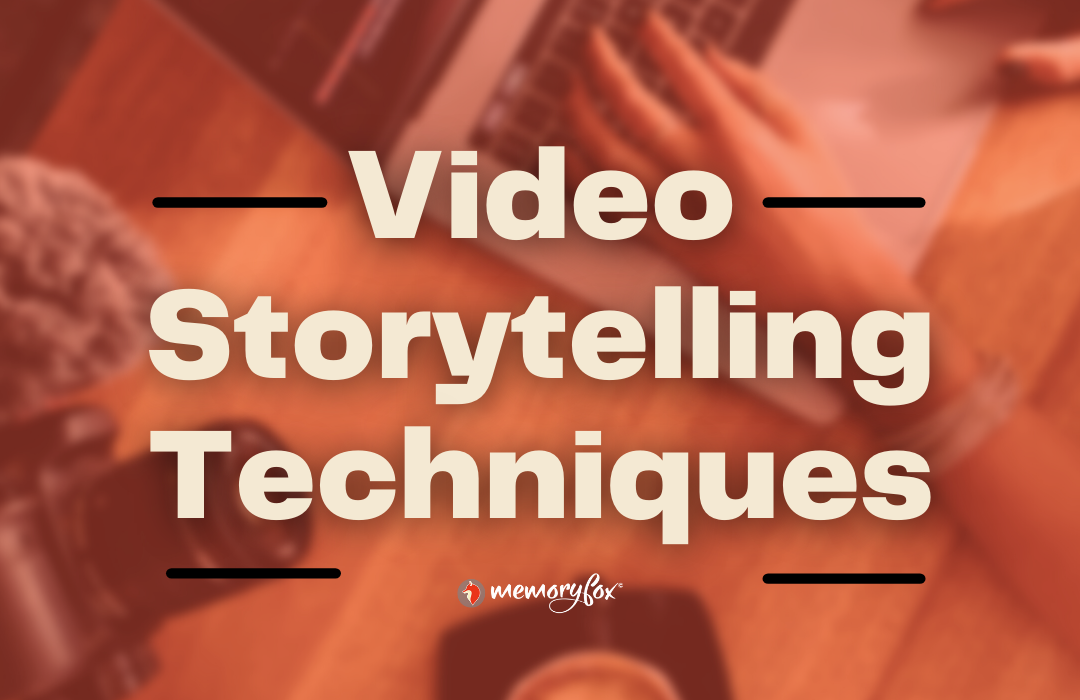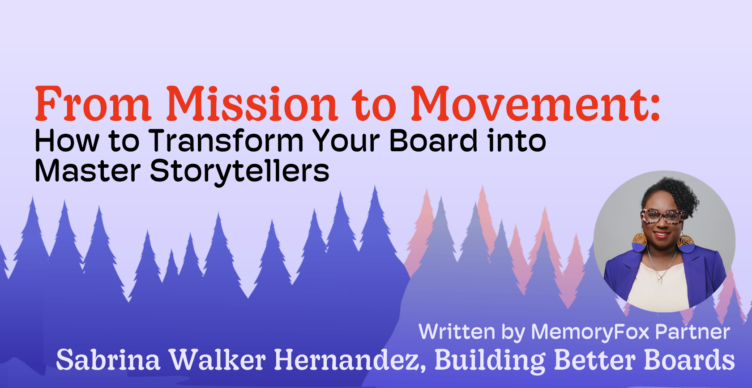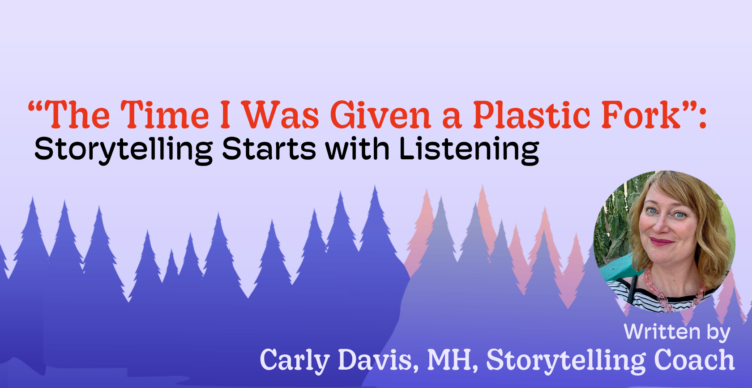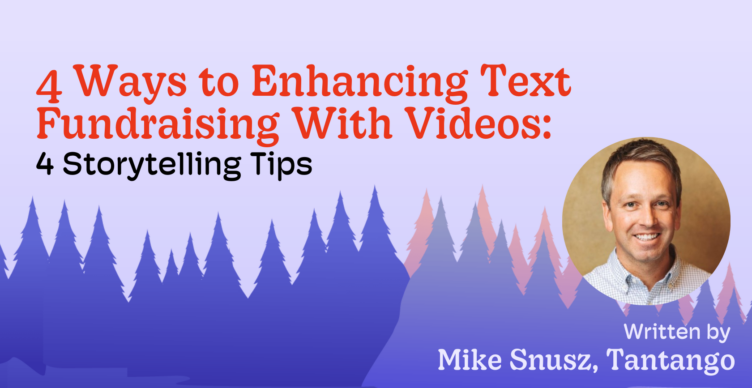5 Video Storytelling Techniques

Video storytelling is for more than just filmmakers and commercials on TV. Video storytelling is a powerful tool that can enhance your online presence, build trust with your audience and communities, capture attention, and promote engagement in your channels. The best part? With new technologies emerging, you don’t even have to have a film degree to create amazing video content. You can even use tools available on your smartphone to create engaging videos to better market your nonprofit. Video storytelling can easily be another strong tool to add to your marketing strategy to enhance your organizational goals.
What is Video Storytelling?
In the marketing world, video storytelling is a technique that uses a story arc in a video format to capture and engage the attention of the audience. In for-profit businesses, these videos typically showcase a particular product, brand, mission, or even company as a whole. In the nonprofit world, video storytelling is used to raise awareness of an organization’s services, mission, and ways for an individual to get involved.
The increased awareness of the nonprofit organization’s impact on the community will aid in reaching the set fundraising goal. In fact, 57% of online donors will make a gift after watching an inspirational fundraising video. According to Social Media Week, viewers claim that they retain 95% of a message when they receive it through a video.
With video storytelling and marketing generating more engagement (and higher algorithm scores) than any other content on social media, it is worth the investment to learn this new skill, and further integrating it into your nonprofit’s overall marketing strategy. Video storytelling techniques don’t have to break the bank either, your nonprofit can creatively use resources already available to you to create videos that will have a lasting impact on your audience, and even solicit new donors.
The Video Storytelling Structure
Like any good story, marketing videos must have a clear structure with a beginning or introduction, midpoint or conflict, and end of the “plot” or resolution. In this scenario of nonprofit marketing, the “plot” refers to the goal of the video and how it is executed. It is important to begin with a goal for the video to have clear direction; it gives the video and the story a purpose. If you’re not sure where to start, we have compiled some examples to get you started!
Examples of Individual Video Story Goals
-
Promote or raise awareness of a service
-
Encourage volunteers
-
Promote an event or campaign
-
Solicit donations
-
Increase audience reach or number of followers
While these goals may seem general, they serve as the foundation for each video to guide the “plot” and ensure that the content is within the scope of the goal.
Once you have the purpose or goal, you can then choose other key components that make up the video’s storytelling structure. Do specific people need to be in the video to properly convey the message? Does the video need to be shot at a specific location, such as doing the field work of your nonprofit, or can it be shot anywhere? What is the problem that this video is proposing a solution to, and what elements need to be included to convey that solution?
You should also consider the target audience of this specific video, which will change depending on the set goal you chose from the prompt above. If the video needs to elicit emotion to encourage donations or solicit volunteers, you need to make sure the proper script, text, or sound effects are utilized. If the video needs to be more formal and less playful, it might influence the location and the people involved.
You need to craft your story’s narrative.
If this is a fictional person or character using your nonprofit’s actual services, or showing an actual need, you need to define this person and give them a story. For the purposes of the video, you have to determine a clear starting point and ending point for this character’s story. Additionally, you must determine how the narrative needs to be delivered. Are they talking to the audience directly, or does the video showcase the story from a third-person point-of-view?
Most video stories you will create will have a clear arc, narrative, and plot structure. If you’re showcasing your volunteers doing the work of your nonprofit organization, you will still need a clear beginning, middle, and end. The same is true even if you are putting together an interview with a staff member or beneficiary of your services: where do you begin the interview? How do you portray the answers and responses?
Video Storytelling Techniques
1. Use YouTube!
Not all of your videos need to be posted on YouTube, or you don’t have to only use YouTube. However, over 70% of viewers say that YouTube has made them aware of new brands, so any video you make should also be posted on this platform to increase your reach and better serve your community.
2. Solicit User-Generated Content
In an era of mistrust on the internet, user-generated content is hailed as a reliable and trustworthy piece of content on social media. Not only is it the easiest way to build trust in your brand and nonprofit organization, it also an algorithm “hack” that boosts your content to the top of the Instagram feed. What better way to tell the stories of your organization’s services than from those who benefit from them, or from the volunteers who help orchestrate them?
If you want to learn more about a super cool platform that helps you collect, organize, and share user-generated content telling the stories of your community, you can schedule a demo with us!
3. Film it Vertically
This is more of a stylistic issue, but with more people watching videos on their phones, it’s a nice touch to create videos that are mobile-friendly. On average, people spend around 100 minutes per day on their phones watching videos. With that much traffic happening, it is worth playing into it!
4. Keep it Short
Most marketing videos should be held to two minutes or less. Generally speaking, the shorter the video, the more people will actually watch it, and the greater impact you can have. However, if you are creating different videos for different channels, length of the video can vary depending on the channel.
5. Use the Tools You Have Available
If you have an Apple device, you already have a high-quality video editing service at your fingertips. With a view lessons on YouTube, you can become a pro in no time!
If iMovie isn’t your thing, you can use other free and simple services such as Canva, Moovly, or Animoto.
Now that you have a good grasp of video storytelling for your nonprofit organization, it’s time to implement it into your existing marketing plan. Or you can create a new one by reading our comprehensive guide to creating a marketing strategy!
Want more nonprofit marketing tips sent straight to your inbox? Sign up for our monthly newsletter! Don’t worry, we won’t bombard your inbox.




